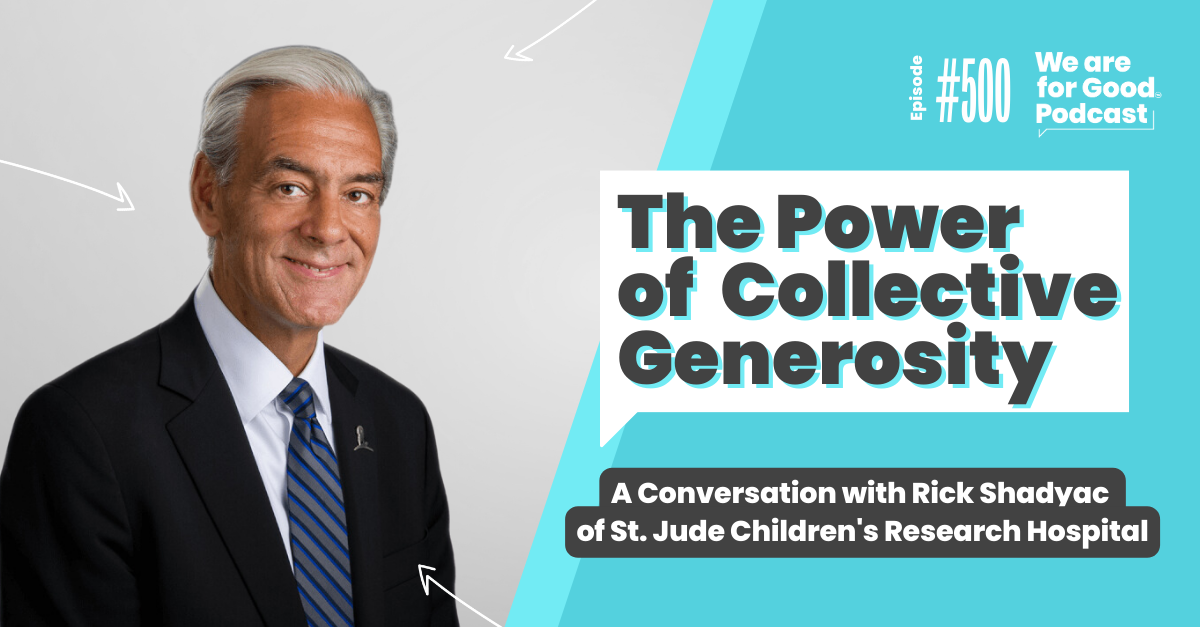Share this
Inside of nostalgia marketing and how nonprofits can use it
Nhu Te on Jan 17, 2024 1:07:11 PM
|
064: Inside of nostalgia marketing and how nonprofits can use it
|
Nostalgia marketing made its mark in 2023, with brands resurfacing millennial fan favorites like McDonald’s celebrating Grimace’s birthday, Mattel reinventing Barbie, or even Amazon reviving its 1999 “Sweatermen” campaign.
Why does nostalgia work? For one thing, it taps into the positive emotions, memories, and experiences of the past. Plus, standing out can be tough in this attention economy—it can be the needle that further connects people to your mission.
We see it work in the consumer arena, but how can nonprofits use it… thoughtfully? Read along as I share resources on nostalgia marketing and how to connect it to your mission.
(Hint: It’s a segmentation tool 😉)

 |
 |
Snackable snippets |
|
Keeping your storytelling fresh and engaging 🎧 “It’s about finding new moments of storytelling to help donors really understand how their dollars are making a difference, how this program continues to make a difference in these unique moments in time.” This year will be rife with opportunities for creators, as 44% of brands plan on upping their creator investments. In our attention economy, people have grown tired of being sold to, so more brands are leaning on partnerships with both micro and macro creators to create more engaging content.
As you shape your content strategy, pay close attention to social This will be a key channel to focus on, as social commerce sales are expected to grow from $67 billion in 2023 to over $144 billion by 2027.
|
In the news |
The Super Bowl unites football fans worldwide, but it also serves as a prime platform for leading brands competing for coveted ad spots during the event. Already, five sweet brands have signed up to run ads during the big game on February 11, trumping the previous high of three in a single Super Bowl.
There are a few reasons for this surge: nostalgic marketing, more ad budget, and a chance to get in front of young people.
*****
Earlier this week, Meta revealed plans to eliminate or consolidate certain detailed ad targeting options. This decision is driven by factors like limited usage, excessive granularity, or sensitivity concerns associated with certain topics.
The ad targeting options deemed "sensitive" are associated with interests linked to health, race, and/or ethnicity. This move is likely due to Meta’s past controversies over the unethical use of its ad targeting.
For your inspiration folder |
St. Jude Children’s Research Hospital needs no introduction as it is one of the leading organizations fighting childhood cancer. Rick Shadyac, President and CEO of ALSAC, the fundraising and awareness organization for St. Jude, joins Jon and Becky on the We Are For Good Podcast to talk about community and collective generosity.
In both fundraising and marketing, we often lose focus on business and growth and we forget that people innately want to do good. Rick shines a light on that: “Humanity is good. What troubles me is all the focus we place on the negative things going on in the world. There are so many people that come together to do good, but they’re doing it quietly.”
 |
Share this
- December 2025 (2)
- November 2025 (4)
- October 2025 (5)
- September 2025 (4)
- August 2025 (4)
- July 2025 (4)
- June 2025 (4)
- May 2025 (4)
- April 2025 (5)
- March 2025 (4)
- February 2025 (4)
- January 2025 (4)
- December 2024 (4)
- November 2024 (3)
- October 2024 (5)
- September 2024 (4)
- August 2024 (5)
- July 2024 (4)
- June 2024 (4)
- May 2024 (5)
- April 2024 (4)
- March 2024 (4)
- February 2024 (5)
- January 2024 (3)
- December 2023 (5)
- November 2023 (4)
- October 2023 (4)
- September 2023 (4)
- August 2023 (4)
- July 2023 (3)
- June 2023 (5)
- May 2023 (3)
- April 2023 (4)
- March 2023 (4)
- February 2023 (4)
- January 2023 (6)
- December 2022 (2)
- November 2022 (5)
- October 2022 (4)
